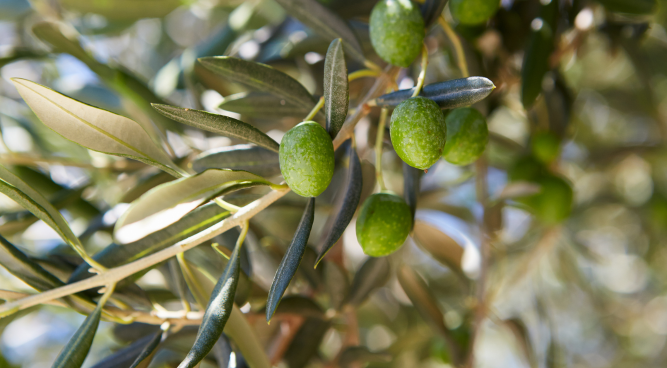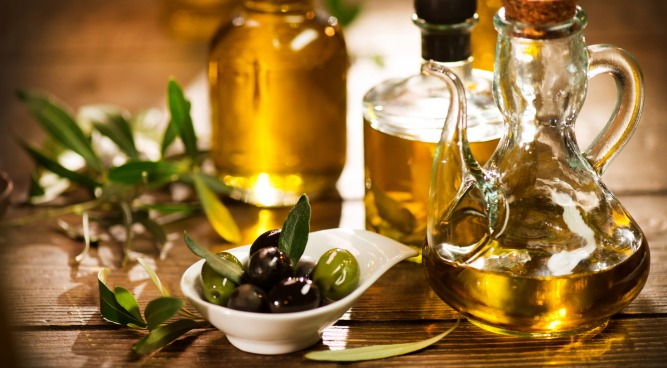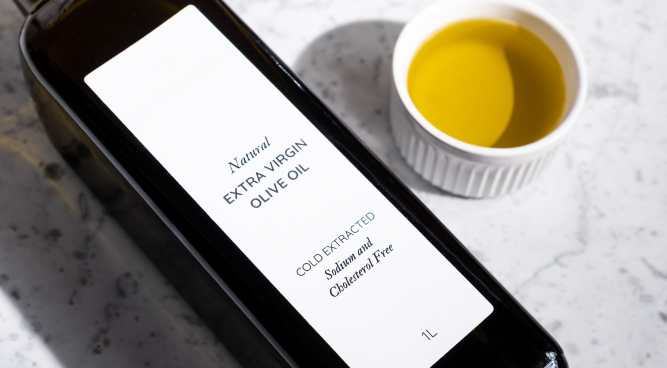Table of Contents
Introduction
Bottling olive oil ensures its freshness and quality. Olive oil transcends its role as a mere ingredient in Mediterranean cuisine; it embodies a symbol of health, exquisite flavor, and time-honored tradition. Whether gracefully drizzled over a crisp salad, serving as a delectable dipping sauce for warm, freshly baked bread, or seamlessly integrated into an array of recipes, olive oil has become an indispensable presence in kitchens worldwide. Yet, before this liquid gold graces your dining table, it embarks on a meticulous journey, with the critical phase of bottling being a pivotal moment. In the following exploration, we will delve into the captivating realm of olive oil bottling, tracing its origins from the nurturing of olive trees to the final product adorning your kitchen shelf.
Video For You:
The Olive Tree: A Mediterranean Icon

The captivating saga of olive oil commences with the venerable olive tree, scientifically known as Olea europaea. These resilient, evergreen trees have been nurtured and cultivated for countless millennia throughout the sun-kissed Mediterranean region, where the climate and soil conditions offer an ideal environment for their growth. Olive trees are not only celebrated for their remarkable longevity, with some specimens gracing the earth for centuries but also for the precious fruit they bestow upon us – the olives.
Harvesting the Olives
Bottling olive oil preserves a Mediterranean tradition. The journey of olive oil production typically commences with the harvest of ripe olives, an event traditionally scheduled for the autumn months. The timing of this harvest holds profound significance, as it profoundly influences the resulting oil’s flavor and quality. Olives can be painstakingly hand-picked or harvested mechanically. Hand-picking, a time-honored method, guarantees minimal harm to the delicate fruit but demands an arduous and time-intensive labor force. In contrast, mechanical harvesters efficiently collect substantial quantities of olives but may inadvertently cause some bruising to the fruit in the process
After the olives are collected, they are transported to the olive mill for processing.
Milling and Extraction
The first step in bottling olive oil is the milling process. Olives are cleaned and washed to remove any debris or leaves. Then, they are crushed into a paste using stone mills or modern stainless steel crushers. The paste is further mixed to facilitate oil separation.
Next, the olive paste undergoes a critical step called malaxation, during which it is gently stirred or mixed to break down the emulsion, allowing the oil droplets to combine. This step is crucial in determining the oil’s flavor profile and aroma. Longer malaxation periods can lead to a milder, smoother oil, while shorter periods result in a more robust and peppery flavor.
After malaxation, the olive paste is pressed to extract the oil. Traditional methods involve using hydraulic presses, while modern techniques use centrifugation, which is faster and more efficient. This separation process yields both extra virgin olive oil (EVOO) and other lower-quality grades of olive oil, depending on factors like acidity, flavor, and aroma.
Quality Control
Bottling olive oil preserves a Mediterranean tradition. Ensuring quality is a crucial aspect of the olive oil bottling process. To earn the distinction of extra virgin olive oil, the product must meet precise standards concerning its taste, aroma, acidity levels, and chemical composition. This rigorous evaluation guarantees that only the finest-quality oil reaches consumers. Samples of the oil are sent to a certified panel of tasters who evaluate its sensory characteristics, including its fruity, bitter, and spicy notes.
Once the oil passes the rigorous quality tests, it is ready for bottling.
Bottling Olive Oil: Art Meets Science
Bottling olive oil is both an art and a science. Bottling olive oil preserves a Mediterranean tradition. It involves a combination of precise machinery and careful craftsmanship to maintain the oil’s quality, flavor, and freshness.

Filtration: After extraction, olive oil may contain small particles or sediments. To remove these impurities and ensure clarity, the oil is typically passed through filtration systems. Filtration helps extend the oil’s shelf life by preventing spoilage.
Storage: Olive oil is sensitive to light, heat, and oxygen, which can lead to oxidation and rancidity. To preserve its quality, it is stored in stainless steel tanks or dark glass containers. Dark glass bottles protect the oil from harmful UV rays, while stainless steel tanks prevent exposure to oxygen.
Bottling: The bottling process requires precision and hygiene. Before filling, bottles undergo a thorough cleaning and sterilization process. The oil is then meticulously poured into these bottles, with each one being securely sealed to ward off tampering and contamination.
Labeling: Additionally, precise labeling plays a pivotal role in delivering crucial information to consumers about the olive oil’s source, quality, and distinctive attributes. Labels should adhere to regional and international standards to ensure transparency.
Packaging: Olive oil bottles are often packaged in attractive boxes or cartons for retail sale. This packaging not only protects the oil but also enhances its presentation.
Tackling Sustainability and Environmental Issues
Bottling olive oil preserves a Mediterranean tradition. Lately, the olive oil industry has witnessed a notable increase in its dedication to sustainable and environmentally friendly practices. This shift represents a growing awareness of the environmental impact associated with olive cultivation. To mitigate these effects, olive oil producers have embraced various sustainable farming approaches, including organic and biodynamic farming methods. These methods are designed to reduce the ecological footprint of olive farming while maintaining high-quality production standards.
Moreover, a noteworthy trend within the industry involves the adoption of innovative practices geared towards environmental preservation. This includes practices such as water recycling, energy-efficient processing techniques, and strategies to minimize packaging waste. These efforts together aid the ongoing journey of the olive oil industry toward greater environmental responsibility.
Choosing the Right Olive Oil
When selecting the ideal olive oil to enhance your culinary endeavors, it’s essential to acquaint yourself with the wide array of types and grades available, each presenting a unique flavor profile and suitability for diverse culinary applications.

Here, we explore some common categories of olive oil:
Extra Virgin Olive Oil (EVOO): EVOO reigns supreme as the pinnacle of olive oil quality, celebrated for its fruity flavor, minimal acidity, and impeccable aroma. This premium olive oil variety is the ideal choice for drizzling over vibrant salads, dipping with freshly baked bread, or adding that final touch to elevate the flavors of your favorite dishes.
Virgin Olive Oil: Slightly less refined than EVOO, virgin olive oil still presents a commendable flavor profile. Although it may not ascend to the same pinnacle of flavor and fragrance, it retains its versatility for culinary applications such as cooking and sautéing, where it imparts its distinct character to a spectrum of dishes.
Olive Oil: Olive Oil, it is occasionally presented as “Pure Olive Oil” or “Light Olive Oil,” encompassing a fusion of both refined and virgin olive oils. It boasts a milder flavor, making it a preferred choice for frying or baking, where a subtler taste is desired to complement rather than overwhelm the dish.
Cold-Pressed Olive Oil: This olive oil variety is extracted without the use of heat or chemical additives, thereby preserving the olives’ natural flavors and nutritional value. It’s a favored choice among those who seek the purest olive oil experience, appreciating its unaltered taste and health benefits.
Flavored Olive Oil: For those seeking an innovative twist on their culinary creations, flavored olive oils offer a delightful option. These oils are skillfully infused with herbs, spices, or other natural flavors, introducing an additional layer of complexity to your dishes, and allowing you to experiment with unique and exciting flavor combinations.
Closing Thought:
The process of bottling olive oil represents the culmination of a centuries-old tradition, where humble olives are transformed into a cherished culinary treasure. From the meticulous selection of perfectly ripe olives to the precise orchestration of the extraction, filtration, and bottling phases, the epic journey of olive oil production seamlessly blends ancient customs with cutting-edge technology. Bottling olive oil ensures its freshness and quality.
When you next grab a bottle of olive oil from your kitchen shelf, spare a moment to contemplate and pay tribute to the skill and steadfast dedication that has played a pivotal role in bringing this extraordinary elixir to your table. More than just a culinary accompaniment, olive oil stands as a testament to hard work, a symbol of a rich cultural heritage, and a reaffirmation of the timeless connection between humanity and the esteemed olive tree. For more information please visit home.
Certainly, here are 5 FAQs related to “bottling olive oil”:
1. Why is bottling olive oil necessary?
Answer: Bottling olive oil is essential to protect it from external factors such as light, air, and contaminants, ensuring its quality and preserving its taste.
2. What types of containers are suitable for bottling olive oil at home?
Answer: Dark glass bottles or stainless steel containers with airtight seals are commonly used for bottling olive oil at home. These materials help shield the oil from light and air.
3. Can I reuse store-bought olive oil bottles for bottling my own olive oil?
Answer: Yes, you can reuse clean and properly sterilized store-bought olive oil bottles for your homemade olive oil, but make sure they are thoroughly cleaned to prevent contamination.
4. How long can bottled olive oil be stored before it goes bad?
Answer: When stored in a cool, dark place away from heat sources, bottled olive oil can remain good for up to 18 to 24 months, although this can vary depending on factors like the oil’s quality and storage conditions.
5. Are there any specific precautions I should take when bottling olive oil to ensure its longevity?
Answer: To prolong the shelf life of bottled olive oil, ensure that the bottles are clean and dry before filling, avoid overfilling to leave some headspace, seal them tightly, and store the bottles in a cool, dark place to minimize exposure to heat and light.




